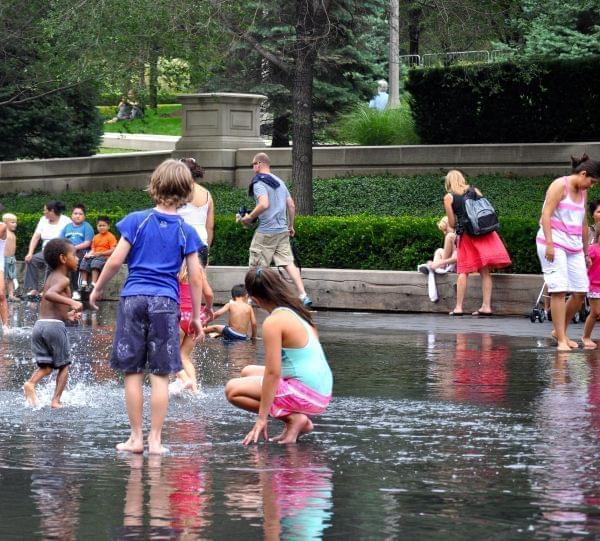Report: ‘Extreme Heat Days’ On The Rise In Illinois And Across The Country

Illinois -- and the rest of the country -- could soon start seeing more days of extreme heat. Madeleine Deaton/Flickr (CC-BY 2.0)
Illinois — and the rest of the country — could soon start seeing more days of extreme heat. That’s according to a report released Tuesday, “Killer Heat in the United States: Climate Choices and the Future of Dangerously Hot Days”— authored by the Union of Concerned Scientists.
Illinois currently experiences at least seven days of extreme heat per year. Those are days when the heat and humidity combine to make you feel like it's above 100 degrees Fahrenheit. But by the middle of the century, that number could rise to 43 days per year if no action is taken to reduce greenhouse emissions. By the end of the century, climate scientists predict 69 days per year.
Dr. Rachel Licker, a senior climate scientist with the Union of Concerned Scientists and part of the team who authored the report, said those conditions could change the way people live their lives. “Those are conditions that are very difficult to work outdoors. That would really have implications for the bottom line of a lot of different enterprises, work schedules [and] worker safety. “
Illinois’ farmers, for example, could take a big hit, Licker said. “Constant exposure to those kinds of conditions can lead to dehydration, and all sorts of different heat illness, from heat cramps to heat stroke and death.”
Licker said the good news is — there is time to make changes. She suggests investing in more solar and wind power while reducing carbon emissions.
But, even if immediate, rapid action is taken to reduce those emissions, according to the report, temperatures are still expected to increase “3.6°F (2°C) above pre-industrial temperatures, the primary goal outlined in the 2015 Paris climate agreement.”
Licker said communities need to prepare with more cooling centers and more ways to serve vulnerable populations, like low-income communities and those experiencing homelessness, as temperatures increase.
“Low-income communities certainly have a unique vulnerability because they don’t necessarily have the resources to have cooling infrastructure in homes or be able to necessarily afford the energy bill to keep an air conditioning running for a long time,” she said.
The report looks at nation, state and county data to predict average number of days per year above a selected heat index. An interactive map can be found below and here and a widget here.

